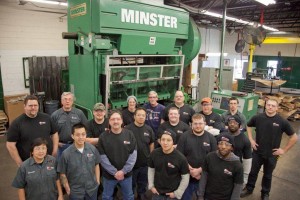The Value of the Near Miss: 5 Ways to Make People Less Guarded and More Engaged
An employee has a brainstorm, a great idea to address an unmet need in your market. But it’s admittedly a little “out there,” not the usual thing your organization goes for. Does he decide to bring up the idea anyway?
Another employee has spotted a possible flaw in your latest product, the one that’s set to launch this week. All the marketing’s been done. Pre-order fulfillment is already in progress. It’s make-or-break time. Does she say something about the potential issue to management?
If they’re in the typical organization, chances are neither of those employees would feel comfortable expressing their thoughts. According to Margaret Heffernan, author of the book Willful Blindness, roughly 85% of employees have issues, ideas or concerns they don’t voice. Their companies simply don’t have a “climate of safety.”
Hearing this statistic, I thought, who better to learn from than one of the top ten safest companies in America, E.J. Ajax, the metal forming plant pictured above. They’ve gone 24 years with only one minor lost-time incident. The U.S. Air Force even asked the company’s president, Erick Ajax, to be the keynote speaker at their annual safety conference this year.
I asked Erick, What do they know that so many others don’t?
Their secret, he told me, is that they understand the value of near-miss reporting.
“When you screw up and almost hurt yourself or someone else, it’s human nature to hide it and not bring it up to your supervisor,” he explained. “But near misses are the early-warning system. It’s OK to report a near miss. There won’t be any disciplinary action. I frequently have to stand up later and say I’m so glad you reported the near miss because now we have a better environment.”
Near misses aren’t confined to the factory floor. I’m reminded of when a colleague called to say he was sorry he undermined me in a team meeting earlier that day. He was reporting a near miss, something that could make our culture less safe.
The hallmark of a climate of safety is people who are willing to report near misses to each other. Here’s what Erick and his team shared about building that environment:
1. Reinforce the importance at every meeting. Creating a climate of safety isn’t accomplished through a one-and-done pronouncement. We need the constant reminder, not because we’re forgetful or distrustful, but because we’re human. Consider creating ground rules for your meeting that reiterate the what’s, why’s and how’s. At Ajax, they start every meeting with a safety discussion.
2. Promote the benefits of safety. From a company perspective, Ajax points out, “profit and safety are joined at the hip.” Safety also drives engagement. When people work in physically or emotionally unsafe conditions, they build walls of defense that disconnect them from others.
3. Proactively make people safer. Ajax pays 100% of addiction rehabilitation costs, including time off. They also average 100 hours and $1724 per employee, per year in training. Erick didn’t have to research that—he knew the exact figure. Making people safe is a top-of-mind priority.
4. Democratize safety. Ajax’s Safety Leadership Team has no management representation. Brandon Holmes, a member of the team, told me people “come to me on a personal level. I hear their idea or issue and let them take part in the solution…We are constantly creating an environment where their ideas are building the business.”
5. Find out what people are talking about around the water cooler. People who think their colleagues and boss care about them are less likely to hold things back. Brandon points out that when leaders invest in what’s important to team members—families, hobbies, goals—people feel more comfortable bringing up challenges. “You just have to make people and culture a priority.”
Sticking your neck out, whether you have a “crazy” idea or a quality or safety concern, can be a risky proposition. But it shouldn’t be that way.
What does your organization do to encourage near-miss reporting?










Comments are closed here.